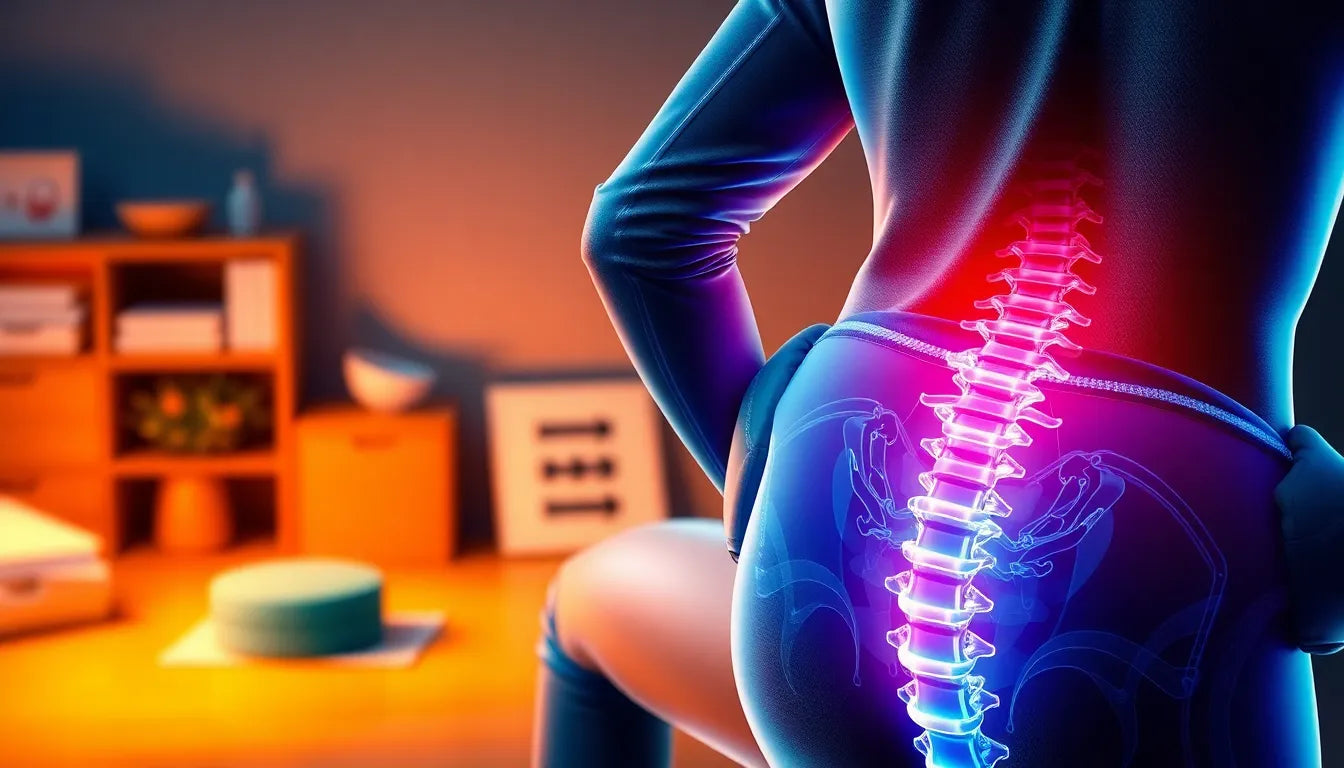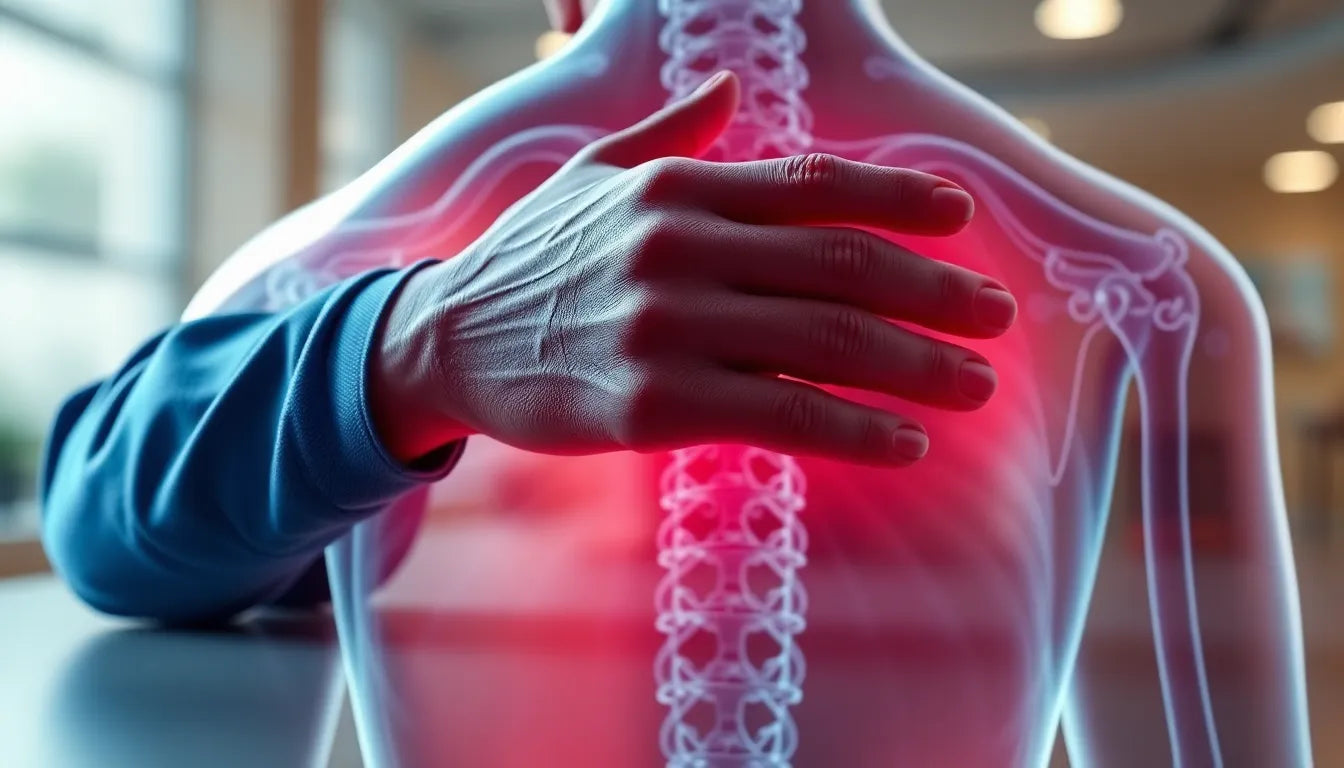Living with sciatica pain down the leg can be a daunting experience, often affecting daily activities and overall quality of life. Sciatica is not a condition in itself but rather a symptom of an underlying issue involving the sciatic nerve. This nerve, which is the longest in the body, runs from the lower back through the hips and down each leg. When pressure is applied to this nerve, it can result in pain that radiates down the leg, a sensation many individuals find both challenging and disruptive.
Understanding sciatica
Sciatica manifests as a sharp, burning pain that travels along the path of the sciatic nerve. It's a common condition that affects a significant portion of the population at some point in their lives. This type of pain can vary from mild to severe, sometimes accompanied by numbness, tingling, or muscle weakness in the affected leg. The impact of sciatica is not just physical; it can also lead to emotional stress due to its interference with daily activities and sleep patterns.
The importance of addressing sciatica pain
Ignoring sciatica pain is not advisable, as it can lead to more severe complications if left untreated. Early recognition and management are crucial to prevent the pain from becoming chronic. Sciatica can significantly disrupt daily life, making simple tasks like sitting, walking, or even standing for extended periods uncomfortable. By addressing the pain early, individuals can avoid potential long-term effects and improve their quality of life.
This blog post aims to provide comprehensive insights into the causes, symptoms, and relief options for sciatica pain. Understanding the root causes and recognizing the symptoms early can lead to more effective management and relief strategies. Whether through lifestyle changes, conservative treatments, or more advanced interventions, there are various ways to alleviate the discomfort associated with sciatica. By exploring these options, individuals can find the most suitable approach to say goodbye to sciatica pain down the leg.
Common causes of sciatica pain down the leg
Sciatica pain down the leg can stem from various underlying issues. One of the most prevalent causes is a herniated disk. This occurs when the soft center of a spinal disk pushes through a crack in the tougher exterior casing, irritating the nearby nerves, including the sciatic nerve. Such disk herniations are often the result of age-related wear and tear or sudden injuries.
Another significant contributor is age-related spinal changes. As we age, our spinal structures, including disks and vertebrae, can undergo degenerative changes. These changes may lead to conditions such as osteoarthritis, which can cause bone spurs that compress nerves, including the sciatic nerve.
Spinal stenosis, a condition characterized by the narrowing of spaces within the spine, can also lead to sciatica. This narrowing puts pressure on the nerves that travel through the spine, including the sciatic nerve, causing pain that radiates down the leg.
Piriformis syndrome is a less common but notable cause of sciatica. This condition occurs when the piriformis muscle, located in the buttocks, spasms or tightens, compressing the sciatic nerve. This muscle's proximity to the sciatic nerve makes it a potential source of nerve irritation.
| Cause | Description |
|---|---|
| Herniated disks | Occurs when a disk's soft center pushes through its outer casing, irritating nearby nerves. |
| Age-related spinal changes | Degeneration of spinal structures leading to nerve compression. |
| Spinal stenosis | Narrowing of the spinal canal, compressing nerves. |
| Piriformis syndrome | Compression of the sciatic nerve by the piriformis muscle in the buttocks. |
Recognizing the symptoms of sciatica
Sciatica symptoms can vary widely among individuals, but they typically include a sharp, burning pain that radiates from the lower back down one or both legs. This pain often intensifies with prolonged sitting, standing, or sudden movements such as coughing or sneezing.
In addition to pain, many individuals experience numbness or tingling sensations in the affected leg or foot. This can sometimes lead to difficulty in moving the leg or foot, affecting one's ability to walk or perform everyday activities.
Muscle weakness is another common symptom, often manifesting as difficulty lifting the foot off the ground or a noticeable decrease in strength in the affected leg. These symptoms can significantly impact mobility and quality of life.
Conservative treatments for sciatica pain
For many individuals, conservative treatments can effectively manage sciatica pain. Physical therapy is often recommended, focusing on exercises that strengthen the muscles supporting the spine, improve flexibility, and promote overall spinal health. Specific exercises can help reduce nerve compression and alleviate pain.
Over-the-counter pain relievers, such as nonsteroidal anti-inflammatory drugs (NSAIDs), can also provide relief by reducing inflammation and pain. However, it's essential to use these medications under the guidance of a healthcare professional to avoid potential side effects.
Heat and ice therapy are simple yet effective methods for managing sciatica pain. Applying heat can relax tense muscles, while ice can reduce inflammation and numb the sharp pain. Alternating between the two can offer significant relief.
It's crucial to consult healthcare professionals to develop a personalized treatment plan tailored to individual needs and conditions. Early intervention and appropriate management can prevent the progression of symptoms and improve quality of life.
Advanced treatment options for sciatica
While many individuals find relief from sciatica pain down the leg through conservative treatments, there are cases where more advanced interventions may be necessary. If pain persists despite non-surgical measures or if there are severe symptoms such as loss of bowel or bladder control, surgical options may be considered. Two common surgical procedures for sciatica include microdiscectomy and laminectomy.
A microdiscectomy involves the removal of a small portion of the disk or bone that is pressing on the sciatic nerve. This minimally invasive procedure is often effective in providing relief from leg pain and improving mobility.
A laminectomy, on the other hand, involves removing part of the vertebra to relieve pressure on the nerve roots. This procedure is typically recommended for individuals with spinal stenosis contributing to their sciatica symptoms.
It is essential to consult with a healthcare professional to determine the most appropriate treatment plan based on the severity of the symptoms and the underlying cause of the sciatica.
Lifestyle and preventive measures
Adopting certain lifestyle changes can play a significant role in preventing sciatica pain down the leg or minimizing its recurrence. Maintaining a healthy weight is crucial, as excess body weight can increase pressure on the spine and exacerbate nerve compression.
Regular exercise is another key component of sciatica prevention. Engaging in activities that strengthen core muscles can provide better support for the spine and reduce the risk of nerve irritation. Incorporating exercises that enhance flexibility and promote good posture can also be beneficial.
Proper ergonomic practices at both work and home are vital in preventing sciatica. Ensuring that workstations are set up to promote good posture, using chairs with proper lumbar support, and taking regular breaks to stretch can help reduce strain on the spine.
Simple exercises to prevent sciatica
- Pelvic tilts
- Knee-to-chest stretches
- Hamstring stretches
- Cat-cow stretches
Conclusion
Effectively managing and preventing sciatica pain down the leg involves a combination of understanding the underlying causes, recognizing symptoms early, and adopting appropriate treatment and lifestyle strategies. While conservative treatments are often effective, advanced interventions may be necessary for persistent or severe cases. By taking a proactive approach and making informed decisions about treatment options, individuals can significantly improve their quality of life and say goodbye to sciatica pain.
Frequently Asked Questions
What is the fastest way to relieve sciatica pain?
Quick relief from sciatica pain can often be achieved through methods such as applying heat or ice to the affected area, performing gentle stretches, and taking over-the-counter pain medications like NSAIDs. These approaches can help reduce inflammation and provide temporary relief.
Can sciatica go away on its own?
In many cases, mild sciatica can resolve on its own with time and conservative treatment. However, if symptoms persist or worsen, it is important to seek medical attention to address any underlying issues.
How can I prevent sciatica from recurring?
Preventing sciatica from recurring involves maintaining a healthy weight, engaging in regular exercise to strengthen the core, practicing good posture, and making ergonomic adjustments in daily activities. These measures can help reduce pressure on the sciatic nerve.
When should I see a doctor for sciatica?
It is advisable to see a doctor if sciatica symptoms are severe, persistent, or accompanied by symptoms such as loss of function, numbness, or weakness. A healthcare professional can provide a comprehensive evaluation and recommend appropriate treatment options.
Are there any alternative therapies for sciatica pain relief?
Alternative therapies such as acupuncture, chiropractic care, and yoga may offer additional relief for some individuals experiencing sciatica pain. These therapies can complement traditional treatments and provide a holistic approach to pain management.


















